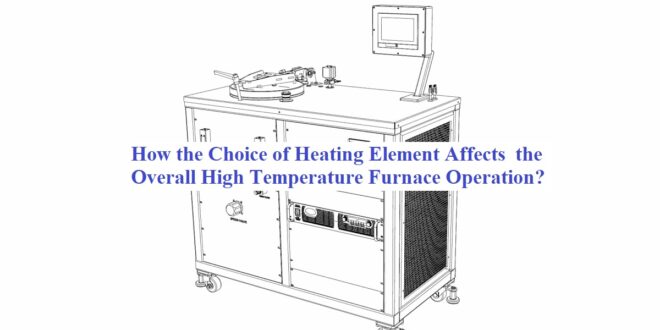If you hear about a furnace, then you would imagine a somewhat big structure that is used primarily for the objective of heating a substance. Now, the term furnace is not a single object or element, but it contains different types of laboratory furnaces, including industrial furnaces.
What makes an industrial furnace different from a normal furnace is that these are able to reach high temperatures, and are used for precise heating in a vacuum environment.
These are suitable to be used for different heating purposes and the design contains a typical chamber with radiant heating elements inside. This design and structure help to attain excellent temperature control with uniformity in heating.
High Temperature Furnace Applications
If we talk about high-temperature vacuum furnaces, vacuum dryers, then you should know that there is not one type but different ones to be used at different places, whether it is an industrial plant, a research lab, and many more environments. There are several basic and common applications of using high-temperature furnaces, including:
- Sintering
- Curing
- Melting
- Annealing
- Binder Burnout
- Metal Joining
- And much more
As these are high-temperature furnaces you can understand that these operate at supposedly very high temperatures which reach up to thousands of degrees. And with such an extreme heating environment, the heating operation has to be carried in a fully controlled environment that is safe and specific to what the end result is desired. This is where the significance of the heating chamber inside and the vacuum environment plays a big role.
Not just standard, but such furnaces can be customized to fit the required application purpose, maintaining the specifications suitable to meet a certain elements’ heating necessity.
High-temperature furnaces are used across different industries and fields, as such:
- Mining
- Aerospace
- Heat Treatment
- Battery Manufacturing
- Dental
- Element Heat Treatment
- Metal 3D Printing
- Powder Metallurgy Application
- Quality Control Laboratories
High Temperature Furnaces – Made of Different Elements
If we talk about what the different materials are used to make such furnaces, then graphite is the most common one. The choice of material is a big concern as these furnaces are used to melt materials like titanium, and this has to be done without any damage inside. The furnace material should be able to withstand such a high-temperature range, there should be no contamination to the melted material with no reactive environment.
This is where graphite does cause a bit of worry, as there are frequent cases of contamination with reactive carbon. To find a clean solution, an ideal alternative is a tungsten.
Tungsten Heating Element in High Temperature Furnace – Ensuring High Product Quality
Talking about tungsten, it takes the heating process a step forward, causing no contamination. In a furnace made with tungsten as the heating element, temperature up to the range of 2800°C (5072°F) and melting point up to the range of 3400°C (6152°F) can be achieved. While tungsten provides the ideal replacement to graphite as the heating element with a high creep-resistance, durability, and dimensionally stable property, the fact that tungsten is hard to process in comparison to other elements, makes it tough to use tungsten in all types of high-temperature furnaces all across the globe.
Thereby, global standards have been ensured that for melting elements like titanium which has a melting point of 1668°C, tungsten heating element equipped furnaces are used, while for other elements like steel and as such, graphite heating elements are the accepted standards.
There are leading and quality names in this field that have achieved expertise in offering high-end tailor-made processes of vacuum furnaces using heating elements made of tungsten, and whose characteristics are also adjusted to meet the specific heating requirements.
Choosing Heating Elements – Dependent on Furnace Condition
What application of the high-temperature furnace is going to be used for? What environment is the furnace going to be used in? What element is going to be put in for the melting operation inside the furnace? All these factors make for the defining rules in what material or element is going to be used as the heating element inside the furnace. Low vaporization, the low vapor pressure at high temperature, dimensional stability, corrosion resistance, high durability, functional high surface loading capacity in a vacuum environment are the properties that should be looked into when choosing the heating element of the furnace.
Addition of Rare Earths to the Heating Element
There are several specific conditions and also the type of heating element wherein rare earth can be added to improve the overall healing properties of the element, thus resulting in high-end quality products in the end. If there is the possibility of adding rare earth, it ensures higher temperature stability as well as microstructure recrystallization at high temperature and minimizes sliding of grain-boundary.
In a vacuum furnace, vacuum dryer, and in such an environment, the choice of aspects like heating elements, chamber, and more has to be done with full consideration and precision so as to attain maximum and optimum results.
 Make Home Smart Let's Make Smart Home for Everyone!
Make Home Smart Let's Make Smart Home for Everyone!

